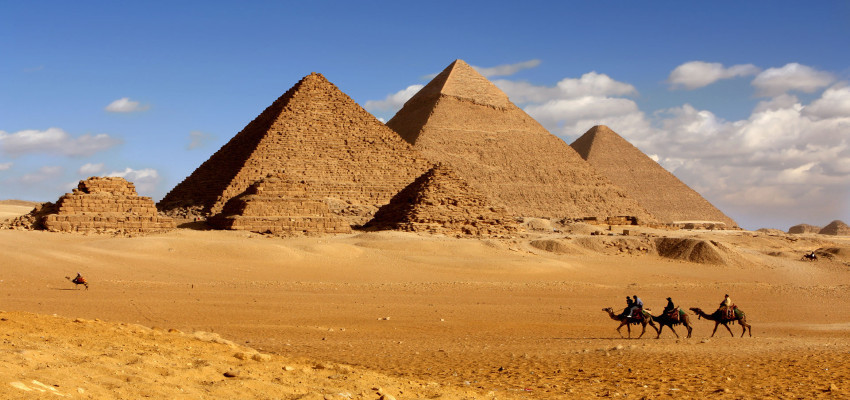
During his maiden State visit to Egypt Indian Prime Minister recently visited the Great Pyramid of Giza.
The Great Pyramid of Giza is named after a Fourth Dynasty pharaoh Khufu, or Cheops, who reigned from 2509 to 2483 B.C. There is no unanimity about how it was built.
Today, the pyramids are the most important historical attractions of Egypt.
Located just outside the Egyptian capital Cairo, the Pyramid of Khufu is one of the three structures that make up the Giza pyramid complex. Originally built to a height of 146 meters, the Pyramid of Khufu now stands at 139 meters.
Formerly known as the Pyramid of Cheops, the Great Pyramid of Giza has attracted generations of history enthusiasts and researchers over the centuries.
The structure is the only of the Seven Wonders of the Ancient World to have survived to this day.
World's oldest wonder
The mystery of how exactly the ancient Egyptians built the immense pyramids has confounded experts for centuries.
Key Takeaways
• Today, the pyramids are the most important historical attractions of Egypt.
• The Great Pyramid of Giza is the only of the Seven Wonders of the Ancient World to have survived to this day.
• The Great Pyramid of Giza also called the Great Pyramid and the Great Pyramid of Khufu, is an ancient Egyptian pyramid that is the largest of the three Pyramids of Giza.
• It is located on the Giza plateau on the west bank of the Nile River near the modern city of Cairo in Egypt.
• These are three 4th-dynasty (c. 2575–c. 2465 BCE) pyramids erected on a rocky plateau on the west bank of the Nile River in northern Egypt.
• The designations of the pyramids—Khufu, Khafre, and Menkaure—correspond to the kings for whom they were built.
• The pyramid was first excavated using modern techniques and scientific analysis in 1880 by Sir William Matthew Flinders Petrie (l.1853-1942), the British archaeologist.

